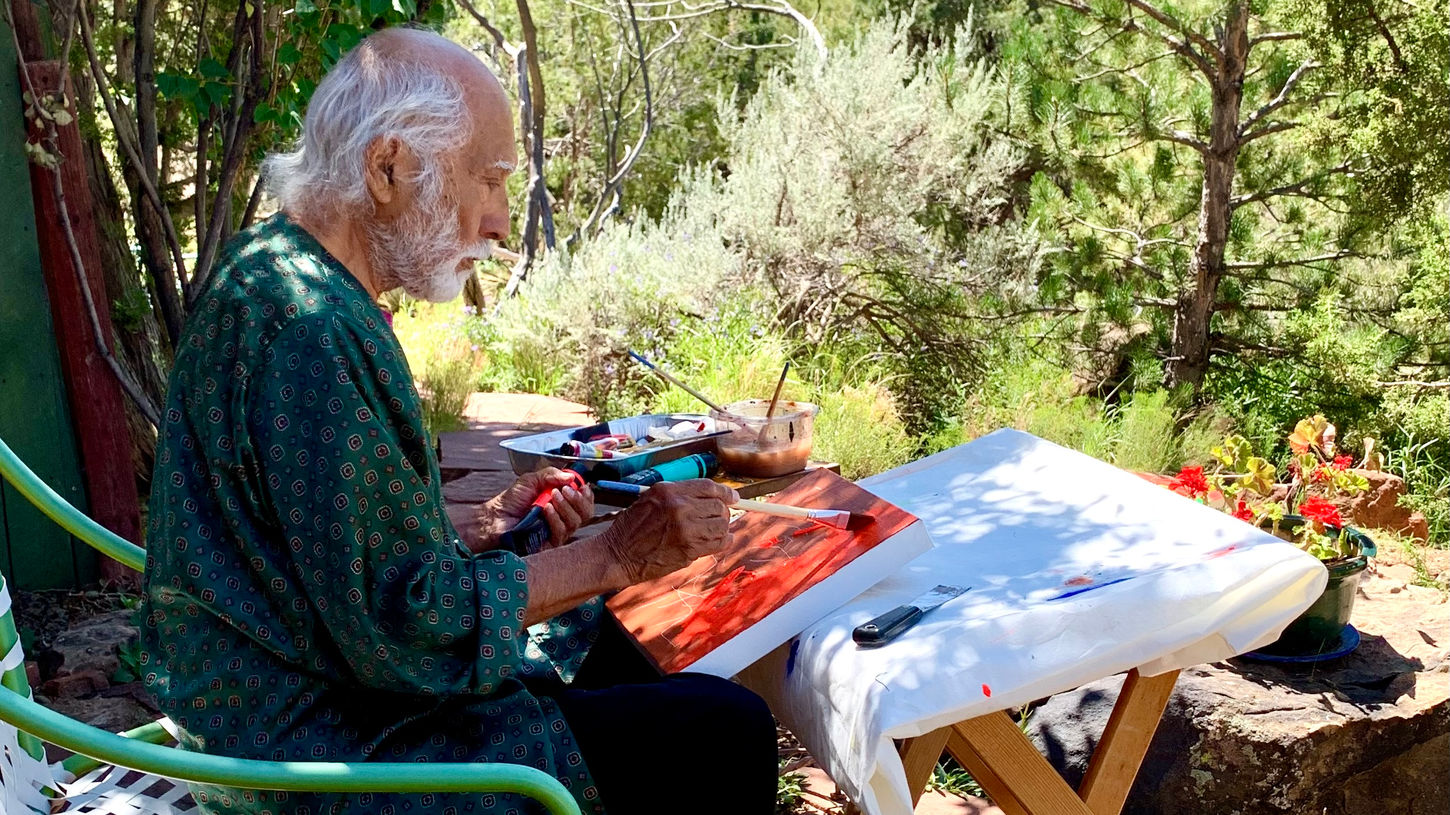Gustavo Ramos Rivera
Born in 1940 in Ciudad Acuña, Coahuila, Mexico.
He is an artist whose work develops in a context marked by the transition between traditional Mexican culture and international influence. Unlike Mexican muralists who emphasized national identity, Ramos Rivera seeks universality in his art and does not limit himself to a conventional idea of Mexican culture.
His Work
His work reflects a deep exploration of materiality and the pictorial process. In the 1980s, he created dark works in which he applied large quantities of tar, revealing traces of color buried beneath the layer of tar. This technique suggests a struggle by the artist to discover his own "original identity" and a return to the origins of his work.
Ramos Rivera is inspired by abstract expressionism, although he does not follow its metaphysics, focusing on his individual experience and the exploration of gesture and the instinctive imprint in his work. His approach is poetic and experiential, inviting intuitive and personal responses to his paintings. His work is situated at the crossroads between Mexican tradition and international influence, emphasizing the importance of the pictorial process and individual exploration in his artistic practice.

Ramos Rivera
Ramos Rivera is an artist whose work has evolved from his early rough, intensely colored canvases to more complex and articulated pieces in the 90s. These early works showed a chromatic intensity and a technique that added spatial complexity. Over time, he moved away from literal objects to focus on painted space, seeking freedom in his format.
His palette is a daily and documentary representation, and he uses color in a way that goes beyond conventional description. At times, the repeated use of a color may stand out in one work, but then diminish and disappear in others, implying a dynamic and changing palette. Ramos Rivera plays with spatial perception, using tones and techniques that create a sense of depth and movement on the canvas.
The line, in his works, has diverse purposes: it can separate spaces, guide the view, or even act as a barrier. This versatility is even more evident in his series of works on paper, where he combines different media with oil painting. In his most recent works, some lines seem to resist integrating with the rest of the image, suggesting the coexistence of two "types" of painting in the same work.

Evolution
Compared to his tar paintings of the 1980s, his line has evolved to be more independent and bold. Instead of simply defining or containing, Ramos Rivera's line is now a free entity, comparable to the way memory can be malleable and adaptable to the imagination.
Although Ramos Rivera's work may have explicit elements, as in "La bicicleta verde" and "Gallo norteado", he often uses shapes and lines that evoke different personal meanings. These shapes and lines, though ambiguous, are evocative and open to interpretation, inviting the viewer to create their own stories from them.

Ramos Rivera sees painting as a medium that departs from traditional literary narratives. Unlike fiction or poetry, painting can show multiple episodes simultaneously, without a precise narrative logic. The forms in his works are constantly changing, representing a dynamic interpretation of memory and the past. This fluidity allows the forms and colors to constantly reinterpret and reconfigure themselves, reflecting the shifting and multidimensional nature of memory.






















